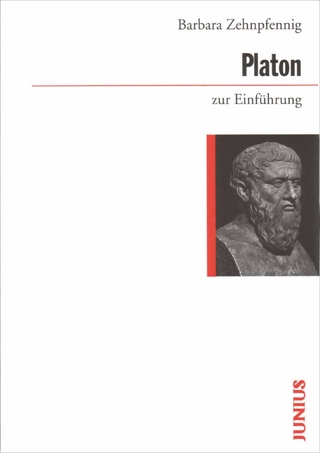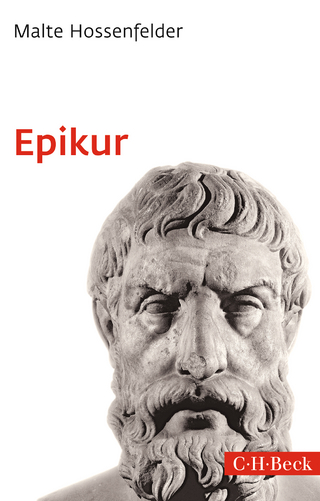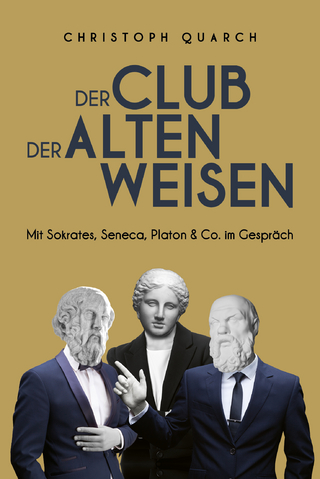
The Divine Spark of Syracuse
Seiten
2019
Dartmouth College Press (Verlag)
978-1-5126-0305-7 (ISBN)
Dartmouth College Press (Verlag)
978-1-5126-0305-7 (ISBN)
- Titel z.Zt. nicht lieferbar
- Versandkostenfrei innerhalb Deutschlands
- Auch auf Rechnung
- Verfügbarkeit in der Filiale vor Ort prüfen
- Artikel merken
A study of place and creative inspiration
Focusing on the figures of Plato, Archimedes, and Caravaggio, The Divine Spark of Syracuse discloses the role that Syracuse, a Greek cultural outpost in Sicily, played in fueling creative energies. Among the topics this book explores are Plato and the allegory of the cave, and the divine spark mentioned in his Seventh Letter. It also considers the machines of Archimedes, including his famous screw, and the variety of siege and antisiege weapons that he developed in the defense of his hometown during the sieges of the First and Second Punic Wars, including “the hand” (a giant claw), the “burning mirror,” and the catapult. The final chapter offers a look at the sixteenth-century artist and roustabout Caravaggio. On the run after yet another street brawl, Caravaggio traveled to Syracuse, where he painted The Burial of St. Lucy (Santa Lucia) in 1608. Typical of his late works, the painting is notable for its subdued tones and emotional and psychological delicacy, even fragility. This captivating book lends clear insight into the links between the sense of place and inspiration in philosophy, mathematics, and art. Rowland is the most learned tour guide we could ask for.
Focusing on the figures of Plato, Archimedes, and Caravaggio, The Divine Spark of Syracuse discloses the role that Syracuse, a Greek cultural outpost in Sicily, played in fueling creative energies. Among the topics this book explores are Plato and the allegory of the cave, and the divine spark mentioned in his Seventh Letter. It also considers the machines of Archimedes, including his famous screw, and the variety of siege and antisiege weapons that he developed in the defense of his hometown during the sieges of the First and Second Punic Wars, including “the hand” (a giant claw), the “burning mirror,” and the catapult. The final chapter offers a look at the sixteenth-century artist and roustabout Caravaggio. On the run after yet another street brawl, Caravaggio traveled to Syracuse, where he painted The Burial of St. Lucy (Santa Lucia) in 1608. Typical of his late works, the painting is notable for its subdued tones and emotional and psychological delicacy, even fragility. This captivating book lends clear insight into the links between the sense of place and inspiration in philosophy, mathematics, and art. Rowland is the most learned tour guide we could ask for.
INGRID D. ROWLAND is a professor at the Rome Global Gateway of the University of Notre Dame, based in the Department of History and the School of Architecture.
A Note on Transliteration and Translation Introduction Plato and Syracuse Plato in Syracuse Archimedes in Syracuse Caravaggio in Syracuse Notes Index
| Erscheinungsdatum | 27.04.2018 |
|---|---|
| Reihe/Serie | The Mandel Lectures in the Humanities |
| Zusatzinfo | 25 colour illus. |
| Sprache | englisch |
| Maße | 140 x 216 mm |
| Themenwelt | Kunst / Musik / Theater ► Kunstgeschichte / Kunststile |
| Geisteswissenschaften ► Philosophie ► Philosophie Altertum / Antike | |
| ISBN-10 | 1-5126-0305-8 / 1512603058 |
| ISBN-13 | 978-1-5126-0305-7 / 9781512603057 |
| Zustand | Neuware |
| Haben Sie eine Frage zum Produkt? |
Mehr entdecken
aus dem Bereich
aus dem Bereich
mit Sokrates, Seneca, Platon & Co. im Gespräch
Buch | Hardcover (2023)
FinanzBuch Verlag
18,00 €


